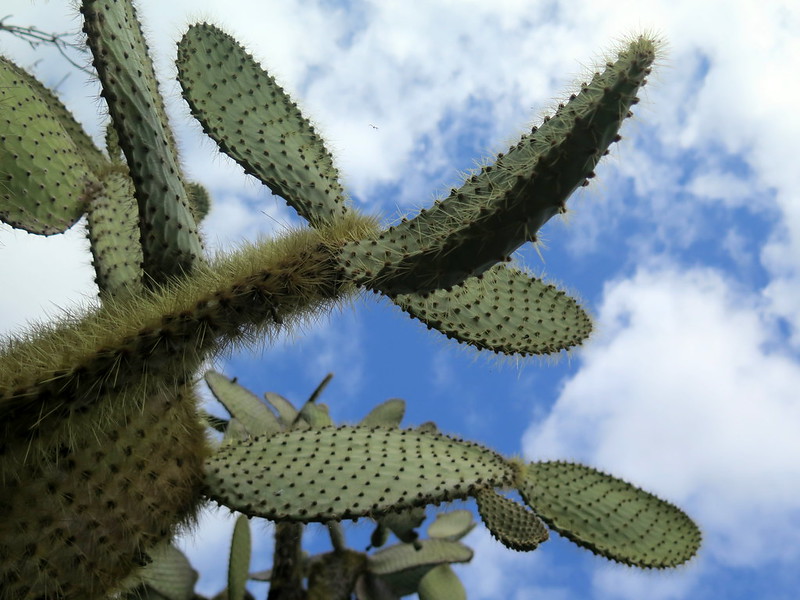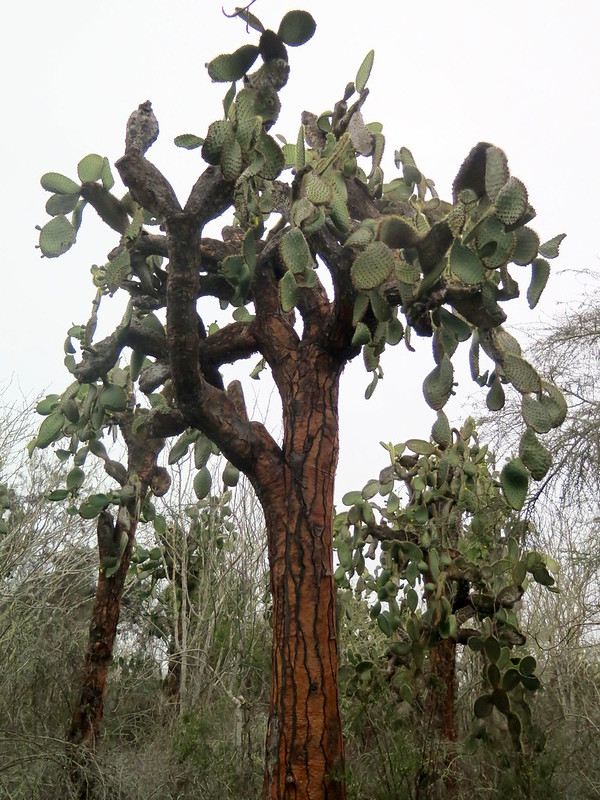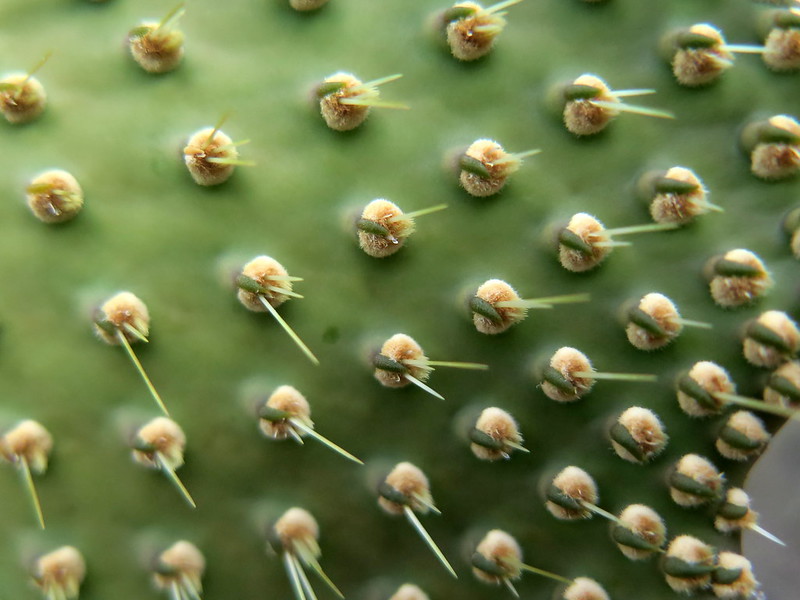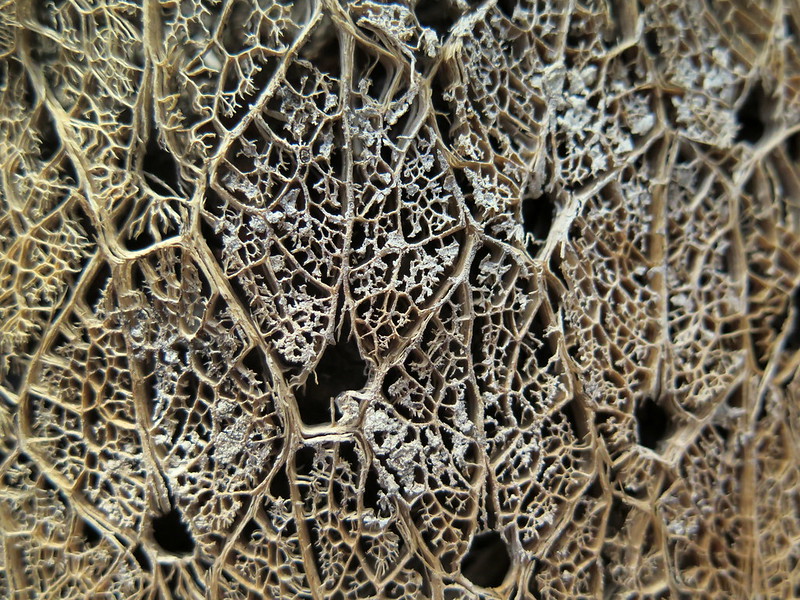
Plants are underappreciated. I learned this in undergrad, when one of my professors (a botanist) showed a photograph in class and asked students to name all of the living things in it. The students named the animals easily – bear, rabbit, wolf, bird – but failed to point out a single plant in the photograph (for the record, I think there were four). If you want to see this same disregard in action for yourself, type “endangered species” into Google Search or Google Images and scroll through the results. Despite plants comprising nearly half the endangered species in the world (46% as of 2012), there are no plant results on the first page of either search. None. Zero.
In light of this and the fact that plants support nearly all life on Earth, here’s a plant appreciation post. Below is the Galápagos Opuntia (Opuntia echios), a type of prickly pair native only to the Galápagos and listed as vulnerable to extinction:

The Opuntia is amazing for two reasons: it thrives in the harsh Galápagos environment and serves as a source of food for the charismatic fauna people know and love. The Opuntia start out as normal looking cacti, but as they grow their old pads harden and fuse to become a “trunk” for the cactus. They essentially takes the form of a tree, and at over 3 meters tall they are some of the largest plants on the Galápagos. These cacti don’t just survive here, they dominate.

Their flowers attract birds and flies that pollinate, and the fruit and cactus pads feed land iguanas and giant tortoises in all seasons. Without these sources of food, I’d wager there’d be fewer animals and fewer species here.
And these cacti have a beauty all their own, embeded in the fractal patterns of their skeletons:

Is that not a plant species worth saving?
